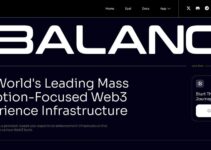Project Introduction
Gearbox Protocol(GEAR) is a decentralized leveraged lending protocol based on Ethereum. It realizes leveraged lending and composability through credit accounts. It aims to reconstruct traditional financial margin financing and securities lending in the way of Crypto and finally realize that users with various needs can borrow on Gearbox. There is no need to directly interact with the interface of any other protocol to trade, mine, arbitrage, etc.

The credit account is a lendable, separate smart contract, which is used to save the collateral initially deposited by the borrower and the debt borrowed. It cannot be withdrawn directly to wallets such as MetaMask, but the funds in the credit account can be exchanged with Gearbox Interaction with other supported DeFi protocols, such as Uniswap, Yearn, etc.
There are three core types of participants in the Gearbox protocol: LP, Borrowers, and Liquidators.
LP: That is, the liquidity provider LP, which essentially deposits money to generate interest, and the specific rate of return depends on the utilization rate of asset supply.
Borrowers: The composition is relatively complex, mainly LPs with active traders and other DeFI agreements. They use leverage to carry out trading strategies such as short selling, long selling, and mining.
Liquidator L: mainly refers to the third-party liquidator, who is responsible for checking the health coefficient of the credit account. If the health coefficient is lower than 1, the liquidation will be triggered.
Economic Model
The governance token of Gearbox Protocol is GEAR, with a total issuance of 10 billion, distributed as follows:
51% is allocated to the DAO treasury multi-signature address. There is no lock-up period, and the specific use of tokens is determined by the DAO.
1.27% is distributed to Discord early test users, without lock-up restrictions.
0.48% will be allocated to APP early test users, without lock-up restrictions.
0.26% is used for temporary reserves, without lock-up restrictions.
5% is used for credit account mining, no lock-up limit.
9.2% will be allocated to early contributors. After one year of lockup, it will be released linearly within 18 months.
20% is allocated to the team, and after one year of lockup, it will be released linearly within 18 months.
1.28% will be allocated to early external contributors. After one year of lockup, it will be released linearly within 18 months.
11.52% is allocated to the company wallet, which will be released linearly within 18 months after being locked for one year.

According to the official news from Gearbox Protocol, GEAR will be officially launched and circulated at 08:00 (UTC) on December 23, and will be first listed on centralized trading platforms such as MEXC.
Financing and the Team
According to official news, Gearbox Protocol has completed DAO strategic financing of $4.15 million. Investment institutions include Placeholder, Zee Prime, LedgerPrime, Polymorphic, etc., and the financing funds have entered the DAO treasury. The project has recently completed financing through LBP.

Gearbox was first Mikhail Lazarev’s entry in the Ethereum Hackathon in early 2021. The early product positioning was a margin trading protocol built on the basis of Uniswap. With the addition of two other core developers, Ilgiz and Ivangbi, Gearbox has been polished towards a general-purpose leveraged lending protocol.
As the founder and core developer of Gearbox, Mikhail Lazarev has many years of experience in software development. He has participated in many blockchain hackathons and won related awards. He has also done blockchain outsourcing development before; The core developer is also the founder of LobsterDAO; Ligiz is responsible for Gearbox’s product development and algorithm.
Project Analysis
Gearbox’s core competitiveness lies in leveraged lending and composability through credit accounts, allowing users to obtain leverage in the DeFi protocols it supports. The product has been launched on the Ethereum mainnet, with complete functions and a simple and easy-to-use interface. However, the types of assets currently supported and other DeFi protocols are relatively limited. In addition, the Gearbox agreement has a very clear revenue model. If the agreement gradually matures and can generate a better market response, it is expected to generate good cash flow income after having a good TVL.
Regarding the economic model, GEAR tokens have not yet opened the transfer function and cannot be traded in the secondary market. If they enter circulation, the initial circulation will be about 7%. Since the team has allocated most of the tokens to community users when designing the token issuance plan, the concentration of tokens in the early stage may be low. Tokens are only used as governance tokens in the protocol, and users’ demand for holding tokens is relatively limited in the short term. According to the official disclosure, the subsequent community can decide on other uses of GEAR tokens through voting on governance proposals.
In terms of focuses, Gearbox’s focus belongs to leveraged lending, a subdivision of the DeFi lending market. The core requirement may be leveraged liquid mining. Gearbox’s main competitor is Alpha Finance. The Alpha product was launched earlier than Gearbox and has accumulated a certain scale of user funds, which has a first-mover advantage. However, it has only been one year since Gearbox was founded. The product has just been launched, and the business scale has not yet developed, so the market size is still unclear.
Potential Risks:
1. Oracle Attack
Gearbox uses Chainlink as a price-feeding system. If the data provided by Chainlink is inaccurate, it may lead to the malicious liquidation of funds in the agreement.
2. Combinability Risk
Gearbox has benefited from its use of smart contracts to realize leveraged lending mechanism, which has high composability. Still, at the same time, it also faces other risks, such as liquidation or theft of relevant user funds if the protocol it supports is attacked.
3. The utilization rate of funds is too high, and users cannot withdraw their deposits
In extreme cases, if most of the funds in the lending pool are borrowed by users, if depositors want to withdraw their deposits, there may be a risk that there will be no funds available to pay depositors in the short term.
Note: This article was written by users of the MEXC community and is for information sharing only, and does not constitute any investment advice.
Join MEXC and Get up to $10,000 Bonus!



